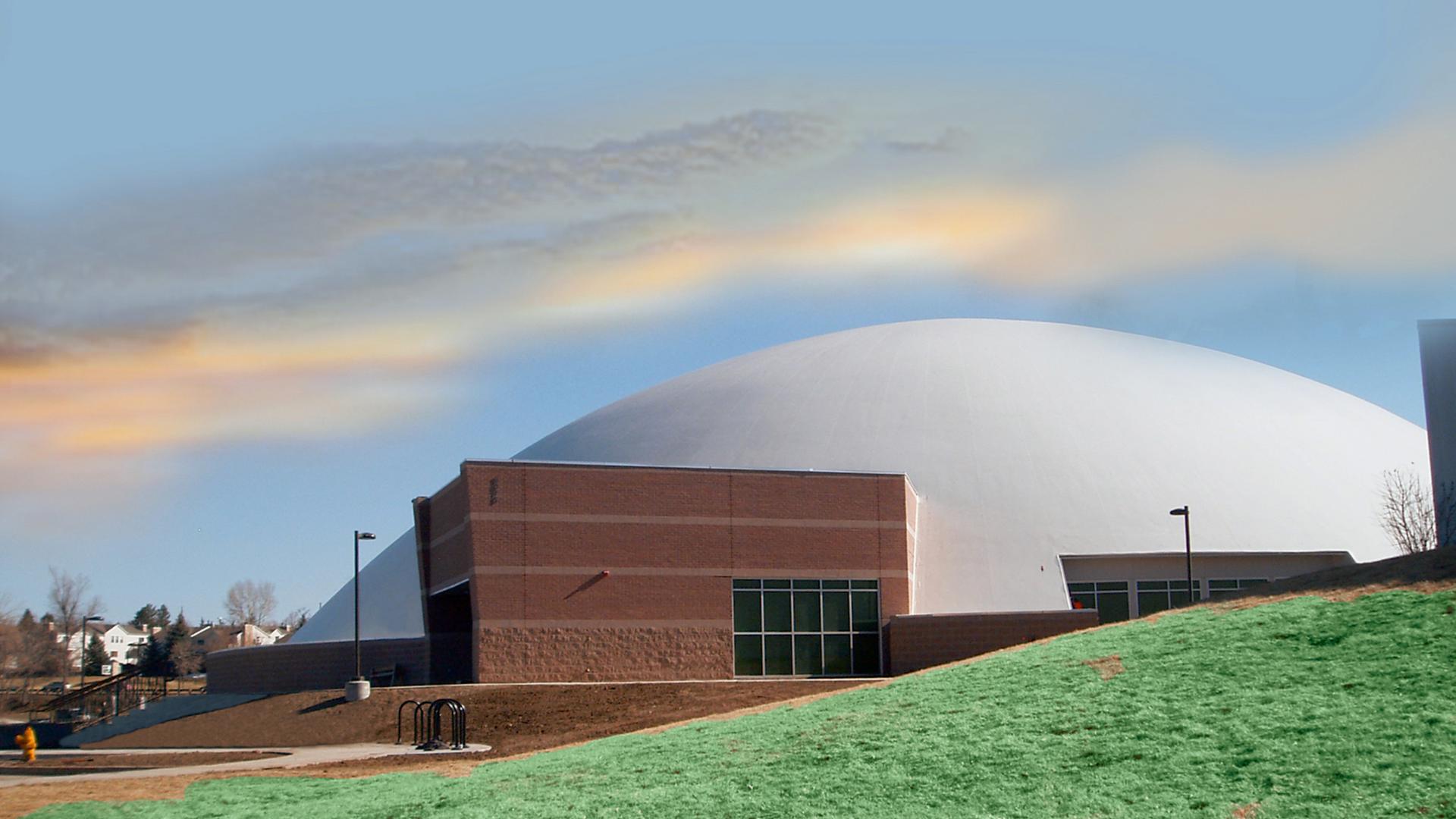Monolithic Dome Churches

The Mile Hi Church Sanctuary in Lakewood, Colorado is a 233-foot diameter by 63-foot tall Monolithic Dome that seats 1,500 with room to add 600 more in the future.
The famous domes of antiquity are structures of worship—the Pantheon in Rome, St. Paul’s Cathedral in London, Hagia Sophia in Istanbul, to name a few. The vaulted, curved shape creates a tranquil, contemplative, respectful atmosphere. Where the domes of history took decades and even a century to complete, we can now build these remarkable structures quickly, affordably, and beautifully as Monolithic Domes.
Open and serene
A Monolithic Dome is completely free-span. There are no internal columns or walls when the concrete shell is complete. Size doesn’t matter. It could be a tiny chapel, only 16-feet diameter, for a handful of people to meet every week. It could be a super-sized dome, 280-feet diameter, with seating for over 3,000. The interior layout is a blank canvas for any design.
For example, what are design options for a church sanctuary? One Monolithic Dome church has a small, circular stage in the center of the dome, with thousands of seats surrounding the stage. Another smaller church has a stage against the dome shell with hundreds of seats in a curved pattern across the floor. And another church has a giant stage with state-of-the-art audio, video, and lighting to record and stream their sermons, live, over the Internet, and still have room for over a thousand to attend in person.
In a Monolithic Dome sanctuary, there isn’t a bad seat in the house.
But a dome church is also a house of worship. For many, it’s a place for peaceful contemplation. A Monolithic Dome is naturally sound resistant. It keeps out the traffic noise and the loud cacophony of modern life. There are dome structures built solely for meditation. Properly designed, a Monolithic Dome church is intensely quiet.
And finally, the clean, curved shape adds an extra dimension often embraced by designers. The vaulted ceiling overhead hearkens back to the domes of antiquity, bringing together the past and the present.
Safety and long life
A spiritually centered life brings emotional safety in a complex world, but a Monolithic Dome can bring physical safety for those attending church. Monolithic Domes are steel-reinforced concrete structures that survive hurricanes, tornadoes, forest fires, earthquakes, and more.
They are naturally disaster-resistant, and with stronger doors, windows and minor changes can meet FEMA guidelines for near absolute protection from disasters. There are Monolithic Domes across the midwest used as safe rooms during tornadoes.
And if the worst happens, the dome becomes a recovery center for the patrons and neighbors.
There are benefits beyond disaster resistance. The composite wall cannot be hurt by termites or other bugs. There are no gaps or spaces for mold or mildew to grow. The dome wall cannot burn. A Monolithic Dome shell is fire rated as Type II or better. Plus long term maintenance is lower. A properly maintained dome has a life-span measured in centuries.
Efficient and green
The outermost layer of a Monolithic Dome is a waterproof roofing membrane. It’s typically a lighter color that reflects sunlight. The next layer is several inches of polyurethane foam—arguably the best insulation in the world. The innermost layer is steel-reinforced concrete—many, many tons of concrete.
The concrete — protected from outside weather by the foam—is a massive internal heat sink. Its enormous thermal mass acts as a flywheel to even out the interior temperature. The practical result is a building that saves 50 percent or better on energy costs.
For some Monolithic Dome churches, the ongoing energy savings of the dome structure, compared to their original church, paid for the dome in less than twenty years.
Cutting energy use in half is only one way a Monolithic Dome is a green structure. Mathematically, a dome encloses the most volume using the least amount of material—saving precious resources. The construction materials are from local sources. Plus, a Monolithic Dome can last for centuries, providing a sustainable structure for future generations.
Savings now and later
The Monolithic Dome is a premium building without the premium price. The initial construction costs are competitive with—and often lower than—conventional construction. How is that possible?
The innovative construction process of inflating an Airform membrane and using raw materials to build the shell in place is the key. There are no intermediate steps.
Plus, a surprisingly small crew can construct a dome—even a giant dome—in a relatively short time. Once the Airform membrane is inflated, construction takes place inside, better protected from the weather. Once the shell is complete, the interior construction is absolutely protected from the weather.
Quick construction, lower construction costs, and lower ongoing maintenance and energy costs will save money now and over the life of the building.
Next steps
There are as many different church designs as there are stars in the sky. We can help.
The Monolithic Dome Institute has access to industry experts who can give practical answers to your questions. Fill out this Free Monolithic Dome Church Evaluation form for an evaluation of your church project. MDI provides this initial evaluation for free and without obligation—we mean it, we are too busy to bother people who are not interested in building a Monolithic Dome. We will respond with real-world information for your potential project.